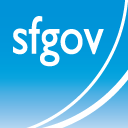 Much of the conversation on open data centers on its biggest source: government. It stands to reason, then, that many social sector business models that leverage open data will involve some sort of direct or indirect interaction with government. We thought we would find go directly to the source to understand more about cities and open data, asking Jay Nath, Chief Innovation Officer of the City of San Francisco for his perspective on how open data can be used to make the lives of all citizens better. Join this discussion and let us know what’s happening in your city in the comments section.
Much of the conversation on open data centers on its biggest source: government. It stands to reason, then, that many social sector business models that leverage open data will involve some sort of direct or indirect interaction with government. We thought we would find go directly to the source to understand more about cities and open data, asking Jay Nath, Chief Innovation Officer of the City of San Francisco for his perspective on how open data can be used to make the lives of all citizens better. Join this discussion and let us know what’s happening in your city in the comments section.
…
The job of the Chief Innovation Officer is to champion new ideas to improve government. Our office is responsible for using innovation to help government become more accountable, accessible, and responsive. All of the projects we take on accomplish one or more of four goals: increasing revenue, lowering cost, saving lives, or improving customer experience.
Information availability plays a big role in these areas by directly improving accountability and making governmental operations, decision-making, and outcomes more transparent.
Our landmark open data policy makes it easier (and mandatory) for departments to share their data and makes it easier for the public to view, analyze, and build upon that data. Our open data portal was among the first of its kind when we launched it in 2009, and has only improved since then. The hundreds of datasets it hosts are being used to help both citizens and city officials work and live better every day, whether it’s understanding crime patterns, tracking transit in real-time, or analyzing the city’s changing demographics.
Our office is constantly flooded with new opportunities to leverage this data, from both inside and outside City Hall. With a very small operating budget, it’s very important for us to choose the projects where we can make the biggest impact in the shortest period of time. Often this means partnering with other city departments or outsiders to develop new pilot programs we might not be able to take on otherwise.
For example, we recently worked with the Planning Department and Department of Public Works to launch Living Innovation Zones (LIZ) – a program aimed at streamlining the permitting process for creative projects and new technologies in designated focus areas of the city. Ultimately LIZ will be administered by the Planning Department, but we were able to serve as a catalyst for trying out this new model – as well as offering capacity and resources to get the project off the ground.
Our biggest successes come when we work across sectors and set clear roles for everyone in order to play to their strengths.
Through the LIZ program, for example, community benefit districts bring support from local businesses and other groups, and the community itself drives the content of the project through workshops and feedback sessions. Being able to craft effective partnerships like this could ultimately determine the future of government in many arenas.
Two weeks ago, we released the entire San Francisco municipal code on GitHub. Previously, the city’s laws were difficult to quickly access and navigate, and making them available in developer-friendly formats now allows the creation of applications that make it easier for people to understand the laws that govern them. In addition to saving time and money, this effort has the potential to substantially improve the interface between citizens and government.
Generally we want all of our projects to start providing returns to residents within a year or two. However, we also spend a small percentage of our time thinking about and working on government “moonshots” – projects that may seem impossible but would provide extraordinary returns in one of the above four areas if they were to succeed. In some respects, our office is able to act as a “risk aggregator” for the rest of City Hall – acknowledging that some things may not work, but that continually trying to innovate is much preferable to remaining stagnant in the face of cultural and technological change. Other cities are trying out similar models for fostering civic innovation, like the Office of New Urban Mechanics in Boston and Philadelphia, and we’re fortunate to be able to learn from each other and share lessons and successes across the country.”
We hope to dispel some of the stereotypes of a slow and bureaucratic government by moving more quickly and being more open to acting on new ideas than is expected. Ultimately, we understand and acknowledge why bureaucratic processes exist, but hope others acknowledge that they should be continually questioned, reassessed, and reformed in response to changing technology and changing needs of citizens.
